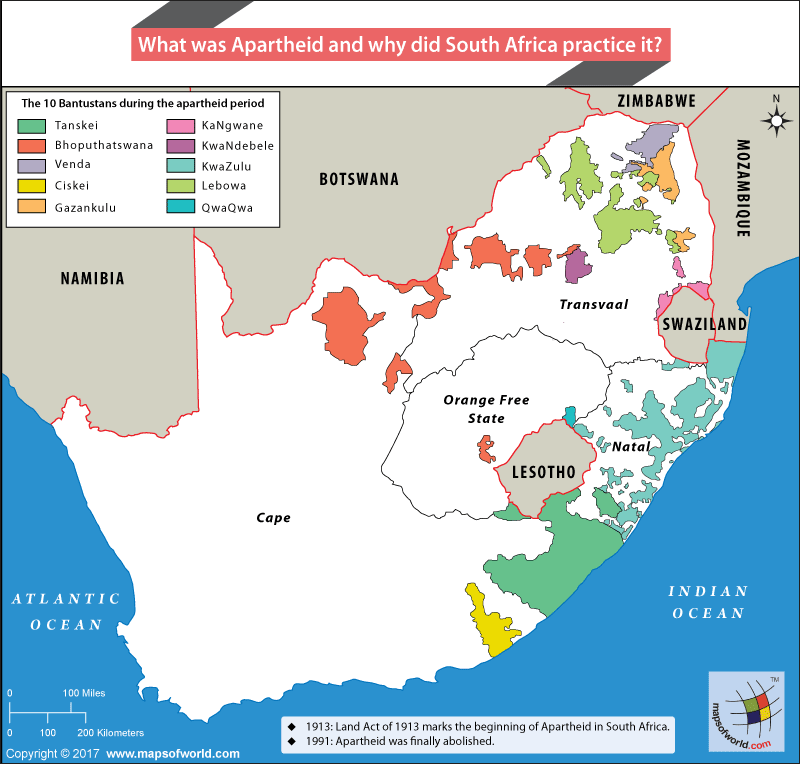What was Apartheid and why did South Africa practice it?
Apartheid is the name of the policy, practiced in South Africa, which legally sanctioned the practice of socio-economic, political discrimination, and racial segregation of nonwhites.
Who practiced Apartheid?
It would be erroneous to say that South Africa practiced Apartheid, since the policy was formulated by the National Party (NP) which allowed the white Afrikaners, who comprised approximately a fifth of the nation’s population, to dominate the large non-white population of the country. The struggle against Apartheid was a long one and was joined by the native South Africans, those of mixed race, and by the large Indian (and other Asian) population in the country.
It all began with the arrival of the Dutch…
Racial stratification and discrimination started to become part of the social fabric of South Africa when the Dutch arrived in the country (The first Dutch settlement in SA was set up in 1652). Through the 1700s, the Dutch colonizers came up with an entire system of laws and practices that established their dominance over the native Africans and separated them based on their race and skin color. Socially, economically, and politically, the Dutch established themselves as ‘superior’ to the locals thus allowing for slavery and exploitation to fester. The British who colonized Cape Town towards the end of the 18th century came up with a number of laws that discriminated against the nonwhites.
South Africa Act in 1909
Following the Boer Wars and many years of painful negotiations, the British Parliament passed the South Africa Act in 1909 granting the country its independence. If this was South Africa’s chance to correct the racially motivated injustice that had been meted out to its majority for centuries, but it did not take it.
1913 Land Act
The 1913 Land Act marked the beginning of Apartheid as a state policy and imposed restrictions on land ownership by the native Africans. It also forced them to live in segregated reserves. The rise of the Afrikaner National Party, which won the general elections in 1948, lent greater rigidity to apartheid and aggression to its enforcement.
The Land Acts were passed by the National Party, restricting each race to live and conduct business in its own sector and prohibiting intermingling. Presence of nonwhites in restricted areas would require valid passes or documents. 10 designated self-governing areas were established. These areas, “Bantustans”, were segregated areas for the indigenous people and 3.5 million people forcibly moved to these segregated zones. Nonwhites were required to register their ancestry and racial profile with the government. Not only was social contact between whites and nonwhites prevented, marriage and sexual relations between the races were prohibited by law. Public facilities, including schools were segregated, and the 80 percent non-white majority had a considerably lower standard of living. Nonwhites were prohibited from holding public offices and denied representation in the government. Despite heavy dependence on nonwhite labor, the non-white races remained severely oppressed.
Strikes and Protests
By the 1960s, strikes and protests against the apartheid emerged with the African National Congress (ANC) at the forefront. These protests were met with violent suppression; the police were granted emergency powers which allowed them to fire at protestors. This drew severe criticism from the International community, and South Africa was forced to withdraw from the Commonwealth of countries in 1961. Over a decade of protests and violent rebellion passed before the US and UK placed strict sanctions on the South African government.
It is only by the late 1980s that the National Party started to negotiate the abolishment of apartheid, and the end of segregation with the ANC. Nelson Mandela and other ANC leaders were released after years of incarceration and in 1991 apartheid was finally abolished.
Related Maps:




